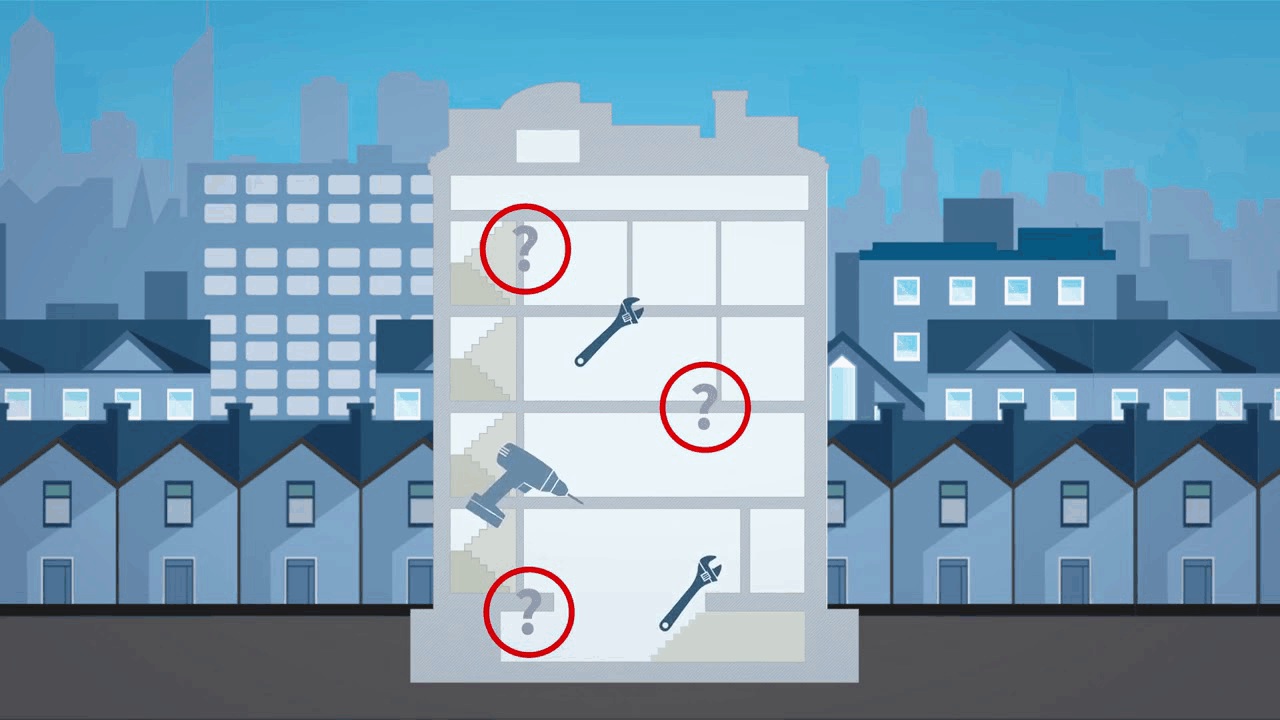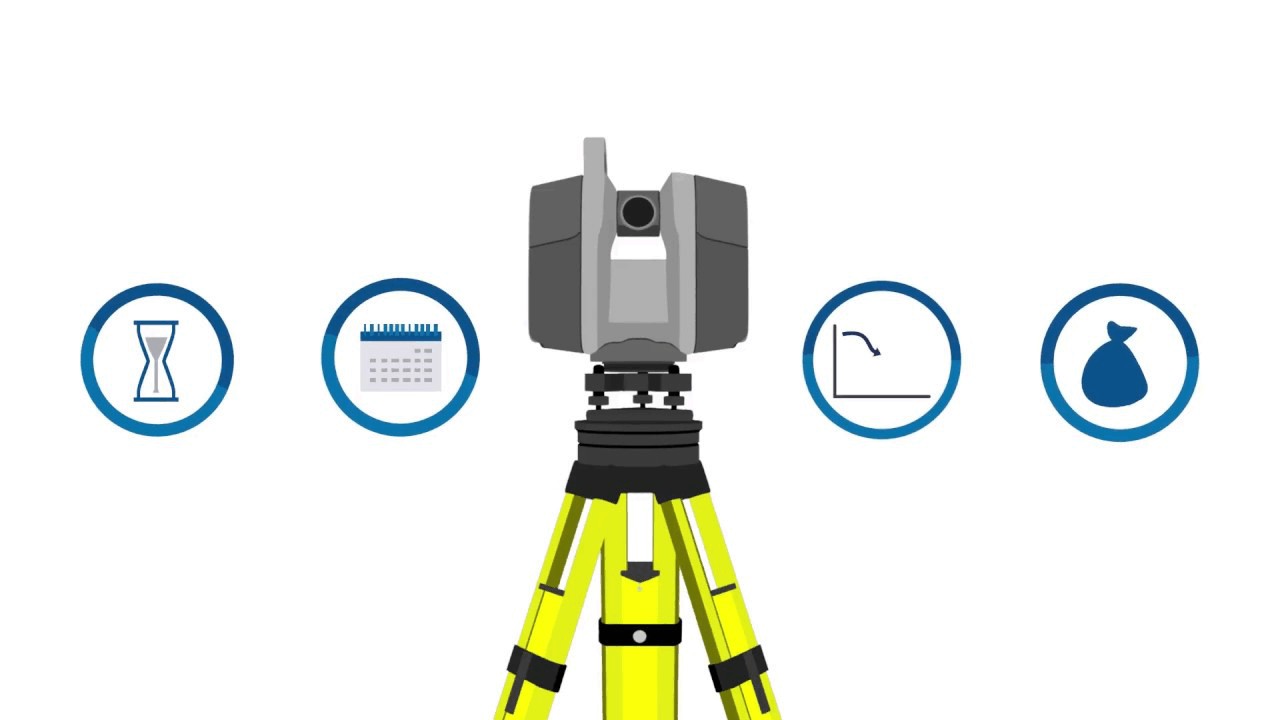Three-dimensional (3D) laser scanning is becoming increasingly commonplace in the construction industry because of the ease and efficiency it brings to many construction workflows. A variety of Architecture, Engineering & Construction (AEC) professionals are discovering how to use 3D scanning solutions to improve the accuracy of their work, better collaborate with each other, and increase their overall productivity.
If you’re relatively new to 3D scanning, you’ll first want to understand the differences between the two basic types of scanners: phase-based and time-of-flight. Phase-based scanners emit a constant beam of laser energy toward an object or surface, then measure the phase shift of the returning laser energy to calculate distances.
By comparison, time-of-flight scanners measure distance by shooting a laser beam to an object or surface and measuring how long it takes that laser beam to bounce back. This type of scanner enables very accurate high-speed scanning at all times and is a versatile choice for many construction applications.
Regardless of the type of scanner, millions of individual measurements are collected to form a point cloud, which is an accurate three-dimensional representation of the space or object being scanned. Point clouds provide the basis for creating detailed and highly accurate 3D BIM models that have numerous uses in design, engineering, and construction.
Ready to learn even more about 3D scanning and its applications? Here are five additional things you might not know.
1. Your smartphone can be used as a 3D scanner
Commercial 3D scanners are evolving beyond the instruments you’re used to seeing on a jobsite toward more versatile, handheld, and mobile scanning tools that anyone can use. While traditional scanners provide the best accuracy for many construction applications, handheld scanners work well for capturing smaller areas, objects, or even mechanical parts. But even more promising is that it’s now possible the smartphone in your pocket can double as an effective 3D scanner.
As smartphones gain popularity and usability across many industries, there are a variety of 3D scanning apps available for iPhones and Androids that have potential in construction. You can scan an object or space with your device’s camera, edit and optimize the 3D image right on your device, and then share it with other people. Also available for smartphones are special scanning sensors—called structured-light sensors—that use infrared rays to estimate distances between objects in a space and then form a detailed image. For quick, on-the-spot scanning on a construction site, it could be as easy as pulling out your phone.
2. You don’t need special training to operate a 3D scanner
Traditional 3D scanners tend to be complicated to use, requiring skilled technicians to operate. If you’ve outsourced 3D scanning to skilled service providers in the past, you know that it can sometimes be difficult to schedule their time and collect all the data you need the first time. This is why 3D scanning has often seemed out of reach for construction firms who feel like they don’t have the training required to do the scanning themselves. But a new wave of 3D scanners is changing all of that.
Easy-to-learn-and-operate 3D scanners are making it possible for BIM and project managers, engineers, and layout professionals to do their own scanning—without needing hours upon hours of training under their belt. Your teams can gather the exact information they need, when they need it, and integrate the scan data with CAD software to further speed up workflows and improve productivity. Without the need for special training, 3D scanning is more accessible to everyone.
3. You can renovate with greater confidence using 3D scanning
Older or historic buildings often lack up-to-date documentation of as-built conditions, making renovations and retrofits especially challenging and risky. It’s difficult to know what you’re getting into when you’re unsure of the structural limitations of the building, or the location and capacity of mechanical, electrical, and plumbing (MEP) components. You can use 3D scanning to capture existing as-built conditions to produce an accurate 3D model to use for both design and construction. The model can then be shared among designers, engineers, contractors, and other project teams before construction starts.
After construction is underway, you can continue to scan the project to track your progress and compare the completed work against the model or drawing. Scan data can help you identify issues faster and fix them before they turn into bigger problems later, like costly rework and schedule delays.
Get the eBook to see how easy it can be.
4. 3D scanning can help you do more and better prefabrication
It’s critical to get a project’s structural elements like steel and concrete right so that modular or prefabricated components can be installed correctly. Mistakes or inaccuracies at the structural level are compounded when floors, windows, walls, or other prefab pieces are installed and don’t fit, or have to be fabricated all over again.
You can avoid wasted materials, money, and effort by using 3D scanning to ensure more accurate building models and fabricate building elements with confidence. A 3D scan integrated with other BIM processes and CAD software allows designers, engineers, and structural contractors to make precise steel and concrete measurements. Accuracy at this stage improves the ability to pre-build components and install them successfully. By gaining confidence in the accuracy of the building designs and installed components, you’re able to take greater advantage of the benefits of prefabrication.
5. You can use 3D scanning to help with post-construction maintenance
Increasingly, people are using 3D scanners to help with post-construction quality assurance and building maintenance. For example, you can assemble all of the 3D models you created from scans taken throughout the project and hand them over to the building owner when the project is finished. This information can prove invaluable for ongoing building maintenance and repairs.
Maintenance teams can compare digital information about mechanical equipment or components that are in perfect condition to any piece of equipment or component that’s been installed in the as-built environment—ensuring everything is operating correctly and logging any wear and tear over time. They can also use a 3D scanner to scan any system or equipment and compare the point cloud to the existing schematic or CAD drawings to check for faults or damage.
3D Scanning: A Versatile Tool to Improve Productivity
The changing construction industry needs versatile tools and technologies that can help many different professionals and teams perform their tasks with greater accuracy, speed, and efficiency. 3D laser scanning in construction is more accessible and useful than ever, allowing a wide variety of designers, engineers, contractors, project managers, and other professionals to easily and quickly scan spaces and objects and create highly accurate models of as-built conditions.
To learn more about how 3D scanning can improve your construction workflows, download the eBook.






![[On Demand] Cloud Engine, a point cloud software that has benefits across construction lifecycle](https://play.vidyard.com/krDXXSZc79pBq8qPSi6W2L.jpg)
![[On-Demand Webinar] - Scan Essentials by Trimble, modéliser à partir d'un nuage de points](https://content.cdntwrk.com/mediaproxy?url=https%3A%2F%2Fplay.vidyard.com%2FA8gbz15oHds6JLskjgic5C.jpg&size=1&version=1692731292&sig=26f2e76e220448d9bb5042f0e684237c&default=)
![[On demand webinar] Laser Scanning Myths Busted for Mechanical & Electrical Professionals](https://content.cdntwrk.com/mediaproxy?url=https%3A%2F%2Fplay.vidyard.com%2FEbAQRaubYhCRh1H5qdMoYZ.jpg&size=1&version=1692731300&sig=67ee3bbda98878ba84acb3d96b1ce197&default=)













